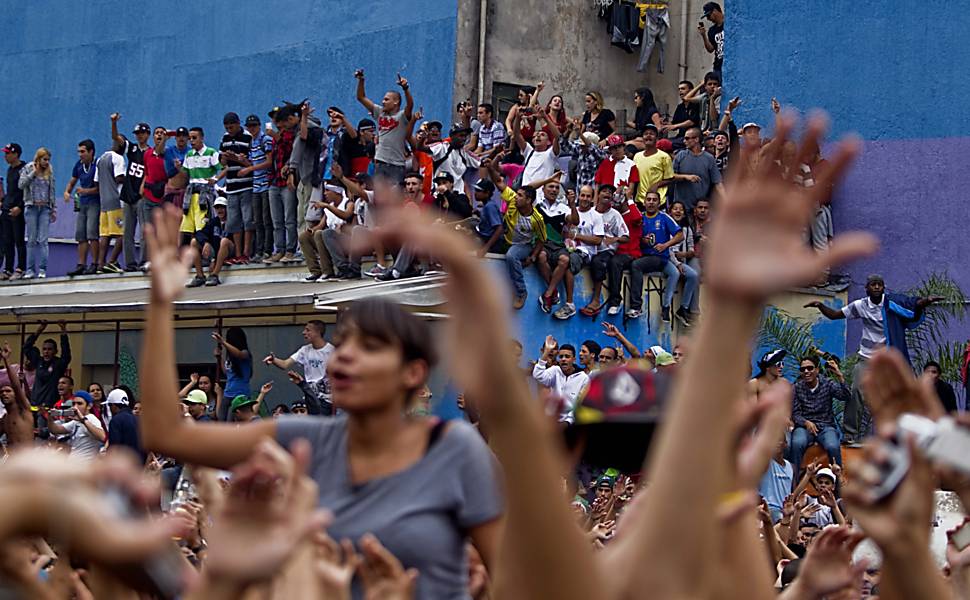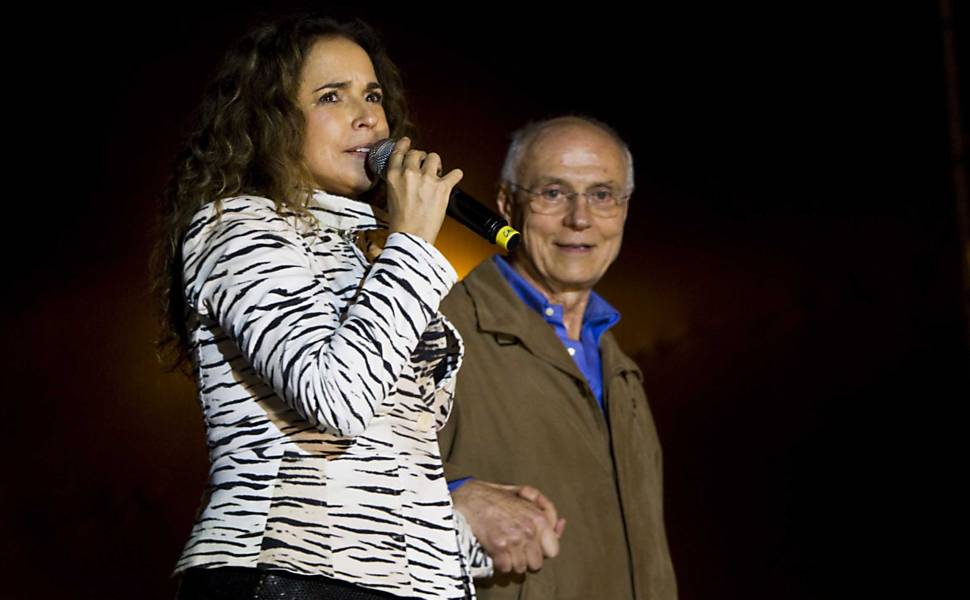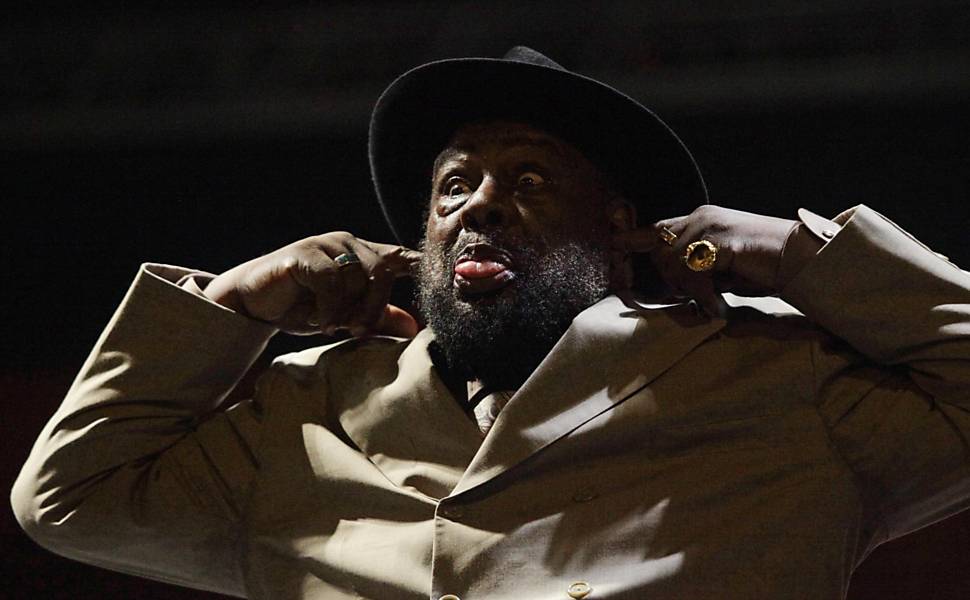São Paulo’s Virada Cultural, a 24-hour mega-party featuring more than 900 acts, put the best and the worst of São Paulo on display last weekend. Despite headlines dominated by crime, Claire Rigby had a great time, alongside millions of others, and argues that these kinds of events should be a source of pride for the city.
By Claire Rigby
Headlines – “DEATHS, ROBBERIES AND MASS MUGGINGS MAR THE VIRADA CULTURAL” – “DEATHS AND MASS MUGGINGS: CULTURE LOSES OUT TO VIOLENCE” – “VIRADA OF THE MASS MUGGING”
São Paulo’s population, waking up after another Virada Cultural, the city’s annual 24-hour cultural marathon, could be forgiven for shuddering with horror at São Paulo’s newspapers over their Monday morning coffee. But for millions of people who attended the festival downtown, the papers seemed to be talking about a parallel event. Not that the robberies, injuries, and even the shooting and death of a young man who ran after the thief who had taken his phone, didn’t take place.
They did; and there was definite tension in the air at times, especially in the early hours, when the mix of thousands of revelers, untold gallons of alcohol, and the carnavalesque all-night party – not to mention the smouldering social tensions that are the mark of every major city, not least São Paulo – took their toll.
But alongside the undoubtedly bad news, there was precious little good news to be read about the Virada Cultural (‘Cultural All-Nighter’), an event that brought an estimated total of 4 million people onto the streets over the course of 24 hours, starting at 6pm on the night of Saturday 20 May. Filling the streets of SP’s dilapidated, occasionally lovely Centro with music, art, dance and theatre, and with hundreds of official food stalls and unofficial beer-sellers, the ninth annual Virada set audiences washing up and down the town to watch shows by thousands of musicians – there were some 900 acts spread across 120 locations – and dancing through the night to everything from techno to samba, lambada and funk carioca.
Art projections filled the Vale de Anhangabaú, where artists and collectives had created 15 installations, including a bridge by BijaRi whose LED lighting glowed in response to the people crossing the valley on it. An art/activist installation Conjunto Vazio, by the collective CoLaboratório, projected Batcave-like lightning flashes onto empty buildings all over town, and under the Viaduto do Chá, grown men and women screamed in excitement as they flew through the air on immense swings attached to the viaduct overhead. Street performers, dancers and theatre companies attracted unlikely, ragtag audiences to their pop-up shows, roping in bystanders and parading them up and down the valley; and George Clinton and P. Funk played to a rapt crowd at 3am, as a tango orchestra struck up 500 metres away at a lonely Estação da Luz. The mesmerizing Gal Costa played a difficult, moving set of new music from her album Recanto; and as Sunday wore on, Racionais MCs, Brazil’s most powerful, important rap group, played a cathartic, euphoric, packed set, also featuring an impassioned speech by the group’s much revered leader, Mano Brown, in which he criticized crime during the event. The band’s previous appearance at the Virada, in 2007, had ended in confrontations between military police and fans that turned to rioting.

We walked the streets for most of the night and again on Sunday afternoon, joining audiences at stages all over the region, home to some of São Paulo’s most historic buildings, and criss-crossing the streets from one show to another, aided (if the light was good enough, and shining at the right angle), by the black, hard-to-read Virada maps and programmes, distributed in their thousands and displayed on structures erected at street corners. The city’s ubiquitous columns of cars were nowhere to be seen, and even some of the roughest of Centro’s troubled streets, which are also home to Cracolândia, an itinerant, crack-riddled no-man’s land, were busy with people strolling from place to place.
None of this is to pretend that all was well with the world at the Virada: it wasn’t. São Paulo is an immense, pressurised megacity with more social injustice and indeed, more rigidly delineated class segregation, than most. It also has a chronic crime and violence problem every night of the week. There’s no doubt about it: assorted pickpockets and muggers were having their own mini-festival of crime at the Virada, while at least one immense band of forty thieves organized a series of arrastões – mass muggings in which individuals or sections of the crowd are surrounded, robbed, and attacked if they resist. I saw a scuffle break out as we passed along Avenida Rio Branco around 3am; and I heard a pop-pop-pop, and saw people running, at what might or might not have been gunshots around the same time, a hundred yards on. (I don’t think it was gunshot, despite the stampede, but I note it here as a possibility.)
And yet as frightening as the contact with crime, violence and sheer drunken disorderliness must have been for anyone on the receiving end of it, it’s what sometimes happens at mass events, especially when mixed with alcohol – and especially when they bring haves and have-nots together in such a sudden, unaccustomed manner.

Super-sized street events always attract the kind of people who disrupt, fight and rob, even in much safer cities. It happens at London’s Notting Hill Carnival, and even, as Vincent Bevins, editor of this blog, points out, at San Francisco’s Gay Pride Parade.São Paulo, arguably, needs more Viradas, and more events like it – it’s what a new surge of street festivals is all about, most recently the Anhangabaú da Feliz Cidade festival that took place in May, as a kind of mini-precursor to the Virada. For every citizen who lost a phone to the thieves (even Senator Eduardo Suplicy wasn’t immune, taking to the stage before Saturday’s opening show by MPB queen Daniela Mercury to ask for his stolen credit cards and ID cards back – then patting his pockets to find his phone also missing) there were hundreds of thousands whose Viradas went off without incident.
I was struck by the overwhelmingly negative press coverage of what was in many ways, and for hundreds of thousands if not millions of people, a successful, enjoyable event. In a telling example of the press’s choice of focus, one headline in the newspaper Agora, a populist broadsheet, read MAYOR HADDAD ADMITS HE NEVER EXPECTED SO MUCH VIOLENCE, over a story in which the mayor, in office since January, also said, ‘From Friday through to Saturday the register of violent crime was identical to that from Saturday to Sunday’. Hardly inspiring words on the city’s problems, but a dash of perspective, albeit a sobering one, on Monday morning’s seemingly hysterical headlines. Describing the smooth running of the Virada’s 900 shows, with just two delayed or with other problems, the mayor went on, ‘What were of most concern was the question of [public] safety and the incidents that occurred above all between 2am and 6am. We had more reports than we’d predicted, but nothing out of the ordinary in an event with almost 4 million people.’
It’s tough to know what the media coverage means. Some have suggested the media may have been especially hard on the new PT mayor. Infographics showing levels of crime and violence at previous editions of the Virada seem to show more or less similar results. But beyond that, a whole tier of the city’s society (the same tier, in the main, who would never dream of attending a mass event attracting huge swathes of people from the city’s poor periphery, as the Virada does) may well have been put off attending not only the Virada, but all manner of street celebrations and festivals – a growing and much celebrated tendency in São Paulo. Violence and crime are chronic problems. But they’re not a reason to abandon the streets any more than SP’s wealthy already have done. Events or even venues at which the classes mix are extremely few and far between in SP, as the city’s affluent areas and the vast periphery that surrounds them run on parallel tracks, in parallel realities. Moments like the Virada, filing the streets with people, huddled at the crossroads in the patchy streetlight, trying to make out what it says on the map, ought to be celebrated.



